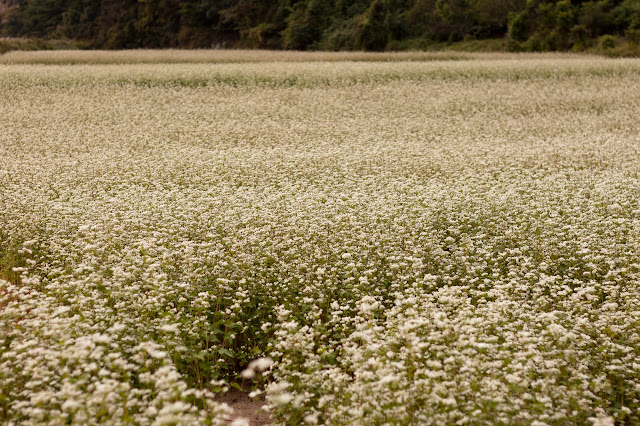Last Sunday, Amanda and I visited Haeinsa Temple, one of
three very famous and renowned temples in Korea, because it’s very old, and
also because it houses 81,258 wood planks that were hand-carved with the teachings
of Buddhism in the year 1,011. If you have a keen eye, you’ll notice that that’s
exactly 1,000 years ago. This year marks the millennial anniversary of the
making of the wood planks that were used to print the Buddhist writings. All 81,258
planks have been kept in this temple for the past millennium, and is only open
to the public for just a few more weeks. These original wood pieces won’t be
open to the public for another 100 years. Unfortunately, we weren’t allowed to
photograph anywhere near the two buildings that house the wood planks, so I’ve
included some photos I found on the internet that show what we were able to
look in on. You can view all the photos I took from around the temple here. We were able to purchase a print that was made from one of the original wood
planks. We learned about the process that was involved in making these planks,
called “Tripitaka Koreana” that began with cutting down the trees for the wood,
drying the wood for 2 years, cutting and carving them into planks, making paper, monks writing
the “master” scripts, transcribing each script onto a single plank, carving
each character into the wood, treating the wood for preservation, and finally
making a print from it and then checking it against the master script. It took
16 years and countless men to make all of these, in total 1.3 million man
hours, they said, and not a single mistake has been found.
This was an incredible thing to witness and another trip we
have been very fortunate to share with our friend Kang and his family. Sadly,
it may be the last we will take with them as we will be leaving Korea in less
than two weeks now.
Next Friday, October 28 will be our last day teaching. On
Sunday, October 30 Amanda and I leave for a vacation on Jeju Island where we’ll
stay for 5 days / 4 nights, returning on Thursday, November 3. Just after
returning to the airport from Jeju, we’ll turn around and depart again 4 hours
later to begin our journey back home. From the international airport in Gimahe,
we’ll fly to Tokyo, then Chicago, and finally Milwaukee where Amanda’s parents
will be picking us up from the airport.
 |
| (photo from internet) A view of the Tripitaka Koreana. What's seen in this photo only represents about 1/8 the total number of wood planks. |
 |
| (photo from Internet) A monk holding one of the 1,000-year old wood planks. |












































